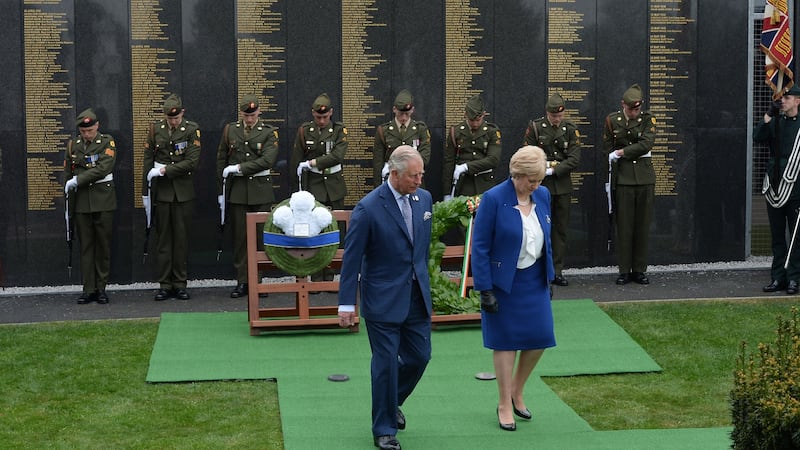It has been five years since the Glasnevin Wall was unveiled, opened with the lofty ambition to remember everyone, friend and foe, who died during Ireland's revolutionary years, 1916-1923.
The Necrology Wall, to give the proper title, was inspired by the Ring of Remembrance at Ablain-Saint-Nazaire in France, which from 2014 has remembered 580,000 soldiers from all sides killed in the first World War.
Speaking in April 2016, then chairman of Glasnevin Trust John Green said every name represented "a story of heartbreak, no matter what side the person served on or indeed for those innocently caught up in the conflict".
“One hundred years on, we believe this memorial reflects the time we live in, with the overwhelming majority of the Irish people wishing to live in peace and in reconciliation. But it is for each visitor to take from the wall what they wish.”
Combative style key to choice of Robert Watt as top health mandarin
Gardaí investigating alleged theft of over €1 million by employee make second arrest
Covid-19 cases among healthcare workers and over-80s at lowest point since August
SpaceX mission lifts off with Irish schoolgirls’ experiment on board

In 2017, when Prince Charles visited, the wall seemed to presage a new era of reconciliation, but it stirred powerful emotions from the beginning – emotions that have seen it covered from view for more than a year.
The wall was first damaged in April 2017 when paint was thrown over it. The paint was removed by cemetery staff, but gold inlay in the lettering came away, too. A new security camera was installed, but it failed to prevent a more serious attack in February of last year.
Then, vandals used a sledgehammer to remove the names of some British soldiers killed in the Rising. In doing so, they also damaged the names of some Irish Volunteers. A tarpaulin was erected a short time later.
Forlorn sight
Today the Glasnevin Wall is a forlorn sight. The tarpaulin, held in place by duct tape and rope, covers the names of 488 people killed in the Rising. The names of four people who died in 1917 and nine who died in 1918 are still visible. The last person is Anthony Heron.
No names have been added from the War of Independence for either 1919 or 1920, since Dublin Cemeteries Trust decided not to add more after the first attack, deciding to “review the wall’s long-term safety implications”. The review, hampered by the pandemic, is ongoing.
The trust's chairman, David Bunworth, said the board would be "making a decision in the next few months", but he would not be drawn further. "It's not possible to give any further information or comment until this happens," he said.
However, one source said the trust may abandon plans to add more than 4,000 names from the War of Independence and Civil War. Instead there could be a “virtual” wall with the names inscribed on a database, it has been suggested.
Raising the issue this week, broadcaster Joe Duffy, who wrote a book about the children killed in The Rising, said the wall was the only memorial for many of the civilian dead, since many were buried in unmarked graves.
Describing the Wall as a “national resource”, he said: “The civilians who were killed were in the majority and we don’t even know where most of them were buried. Very few of the children have graves. The only place where they will be remembered in perpetuity is on that wall.”
‘Giving in’
Urging the trust to come out and “renew their commitment” to the wall, he said: “No one will tolerate that wall being abandoned. I thought it was a magnificent act of remembrance because it was so simple.”
To abandon the project would be to "give in to vandals", he argued. However, former minister for justice Charlie Flanagan said he would not blame the trust if they paused or abandoned the project given his own experiences.
Following plans to have a memorial service to remember the Royal Irish Constabulary’s dead, which erupted into controversy because it would have meant marking the names of Black and Tans and Auxiliaries, Mr Flanagan faced threats of violence and death.
“The objective to commemorate ‘without judgment or hierarchy’, while laudable, cannot be achieved. Repeated and pious words about there being no hierarchy of victims ring hollow,” he said. Nevertheless, it would be a “sad day if the State or its agencies gave in to bullies and vandals”.




